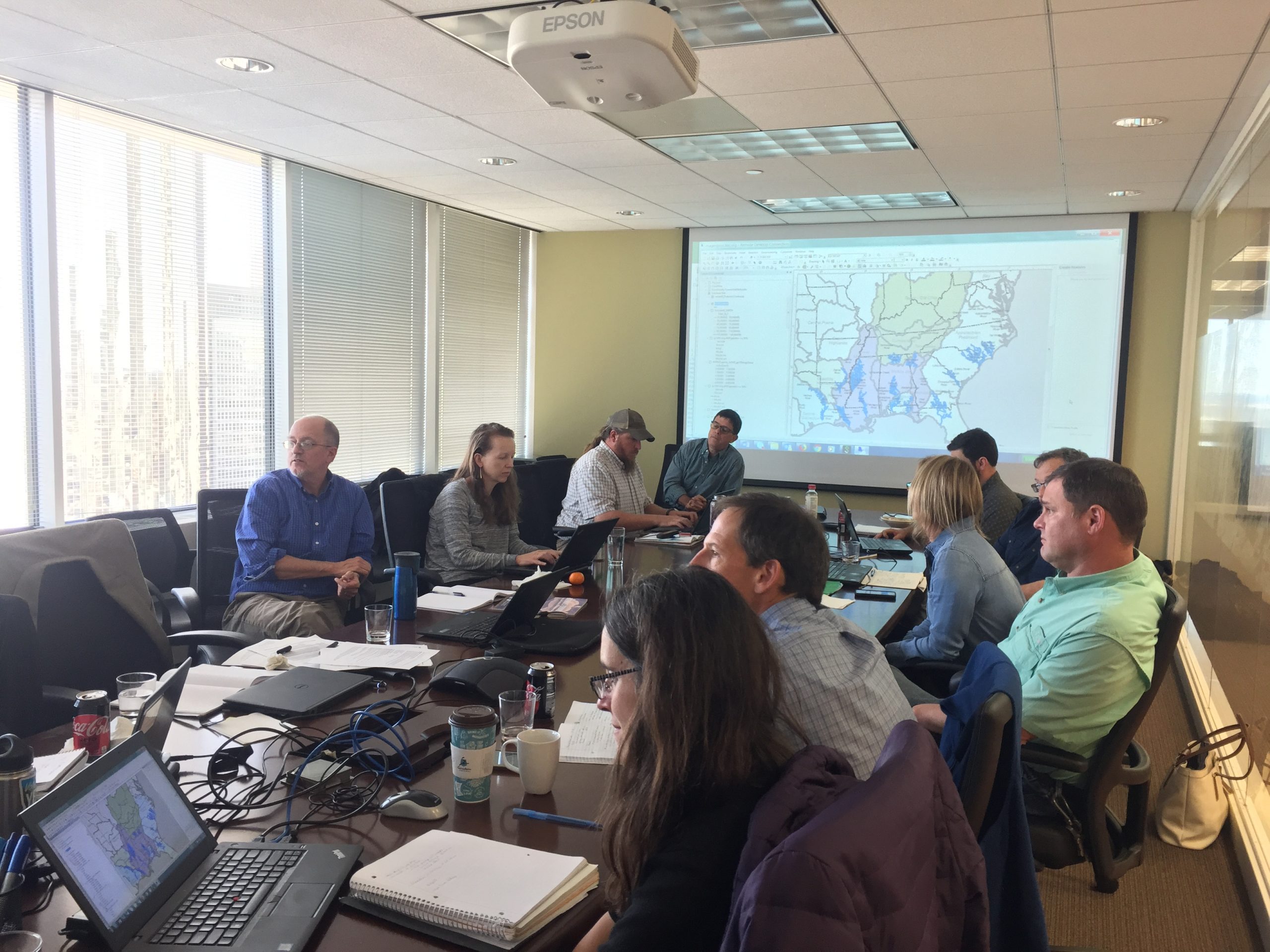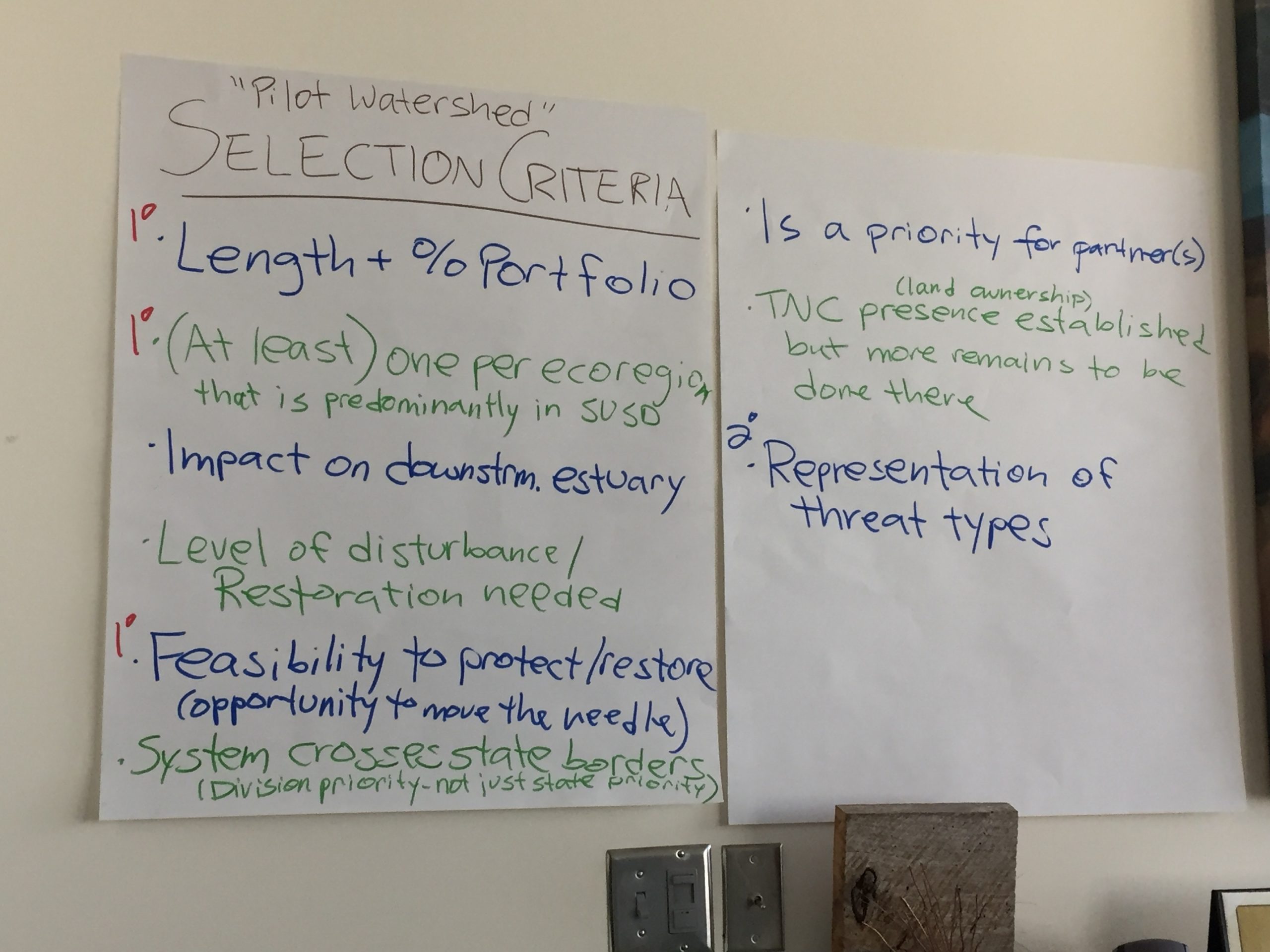Story by Sara Gottlieb, Director of Freshwater Science and Strategy, The Nature Conservancy and CCNet North America Franchise Co-Leader
Protecting land and water is one of The Nature Conservancy’s priorities in North America. The goal is to sustain North America’s biodiversity by conserving a network of resilient sites and connecting corridors that allow species to adapt to climate change impacts. Planning for this work is being undertaken at the division level. This year, the Southern US Division became the first to develop freshwater protection plans.
During the first half of 2019, Angie Watland, a CCNet Coach in the Virginia Chapter of TNC, and I coached four watershed teams through a Conservation Action Planning (CAP) process. The four teams included the Choctawhatchee in Alabama and Florida, Great PeeDee in North Carolina and South Carolina, Cahaba in Alabama, and Yazoo in Mississippi and Louisiana. These watersheds were selected based on a GIS analysis of resilience criteria (length of functionally connected network, number of size classes, watershed land use, etc.) and other factors agreed upon by the group. We chose to use the CAP methodology, which was TNC’s “flavor” of the Open Standards prior to the adoption of CbD 2.0 in 2016, because it is well understood by those involved, has readily-available guidance and tools, and can be adapted easily. During monthly calls, we introduced each step of the CAP process and reviewed work from the previous month. The process culminated in an in-person workshop in Atlanta, Georgia, in May 2019, where team members and others reviewed Theories of Change for each team’s freshwater protection plan, and cross-cutting themes were identified. A final report outlining the process, results, and recommendations to other divisions undertaking their own planning process is due in July.

Four watershed teams (Choctawhatchee in Alabama and Florida; Great PeeDee in North Carolina and South Carolina; Cahaba in Alabama; and Yazoo in Mississippi and Louisiana) joined forces to produce freshwater protection plans and identify regional cross-cutting themes. Photo credit: Sara Gottlieb, TNC.

Watershed selection criteria agreed on by the group. Photo credit: Sara Gottlieb, TNC.
